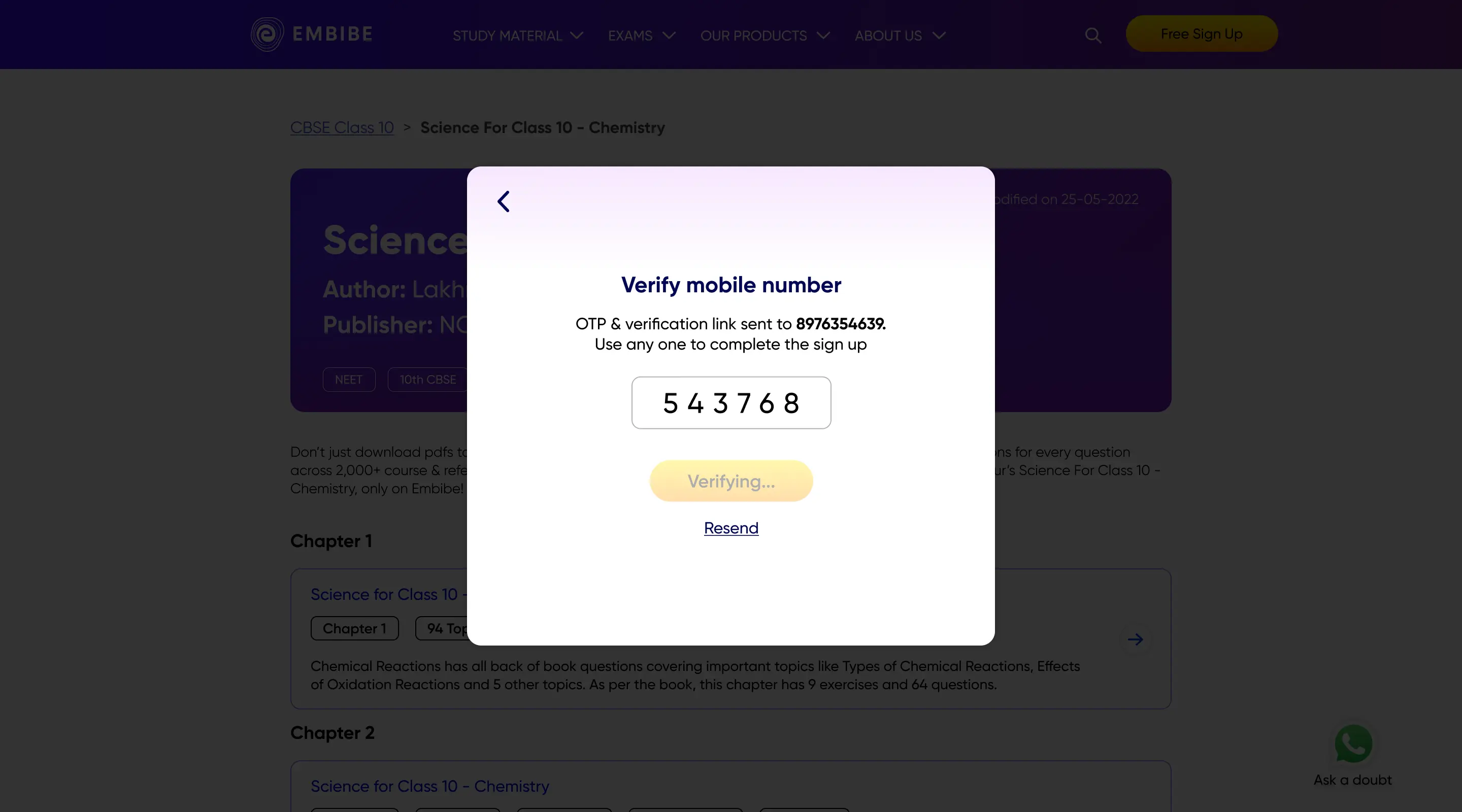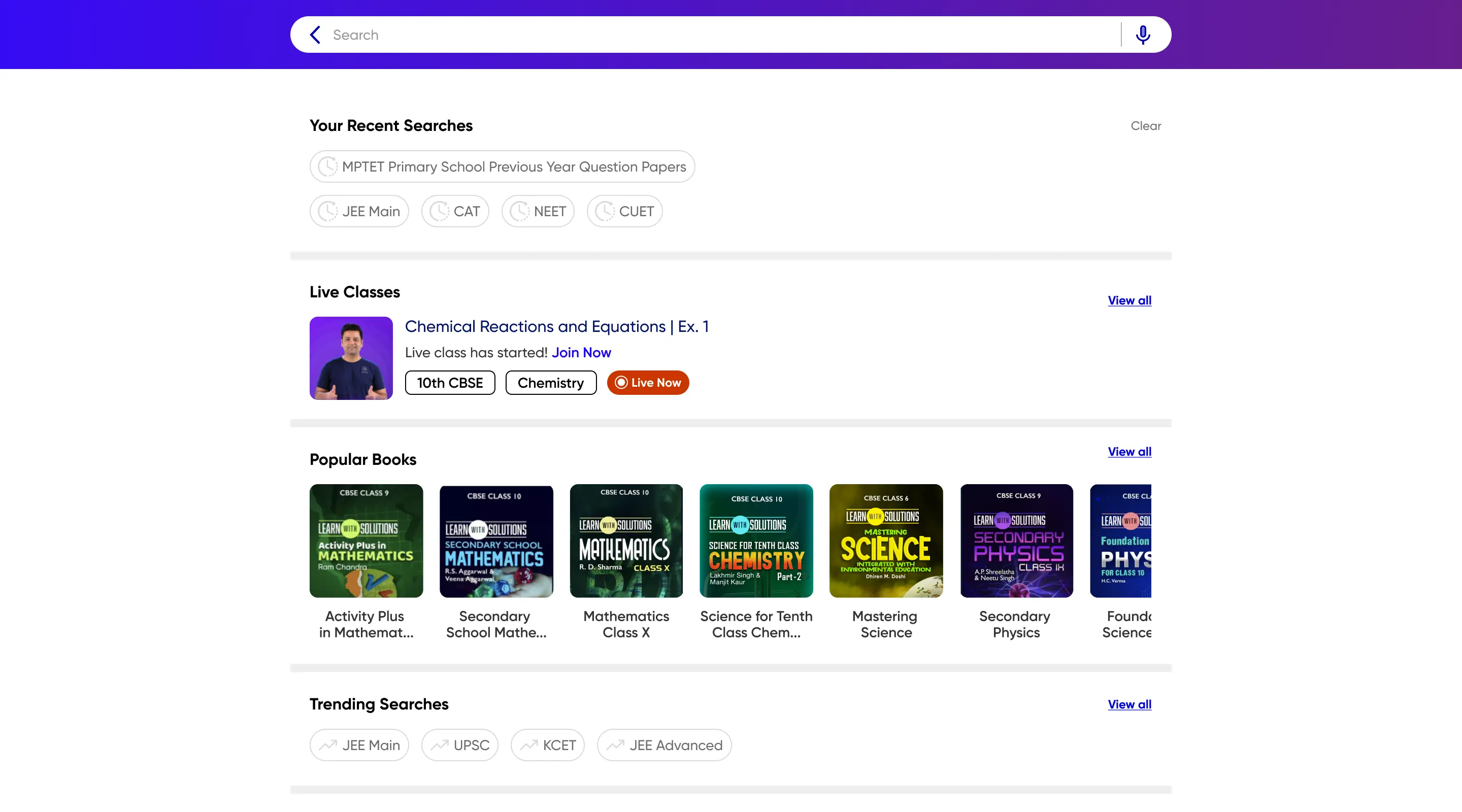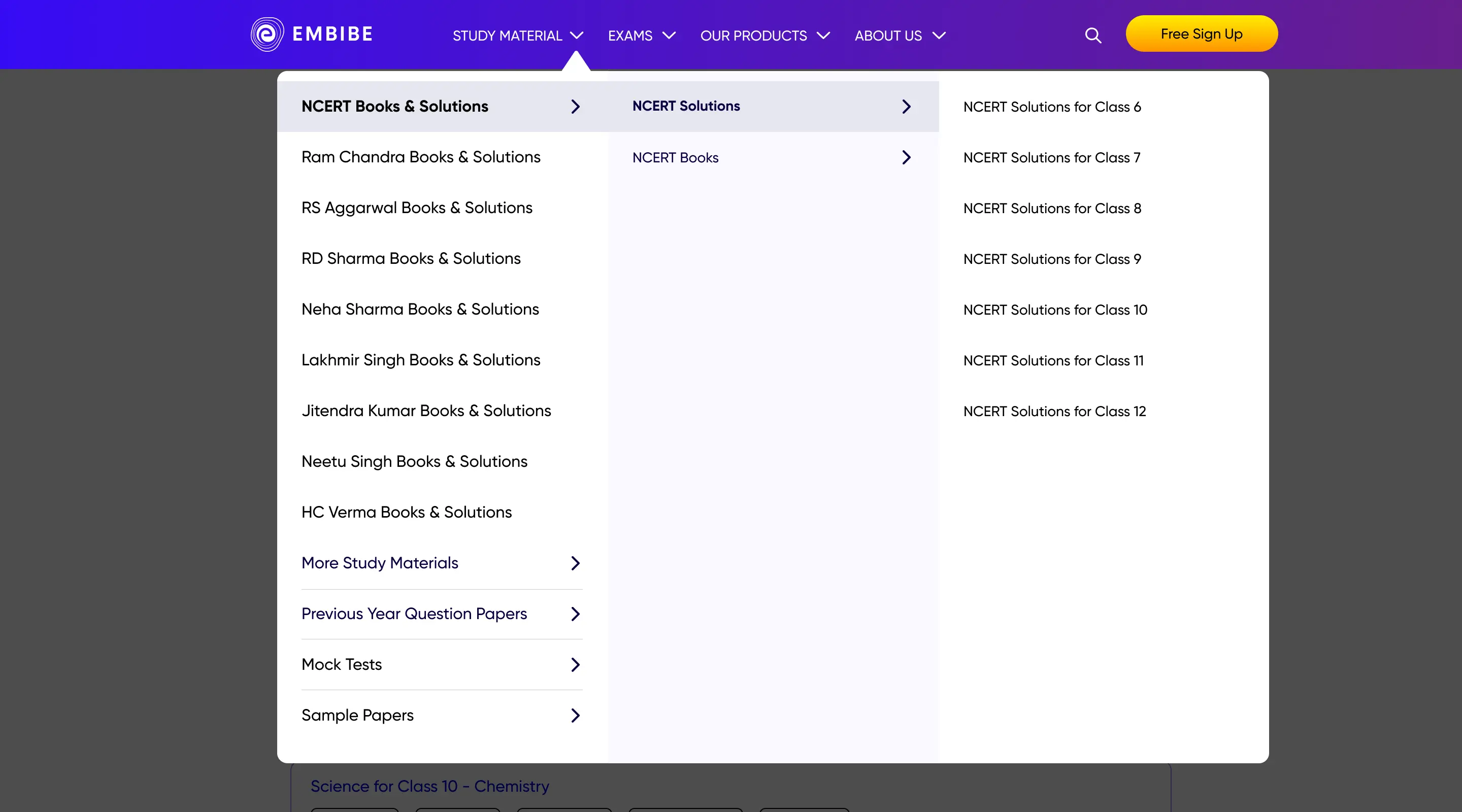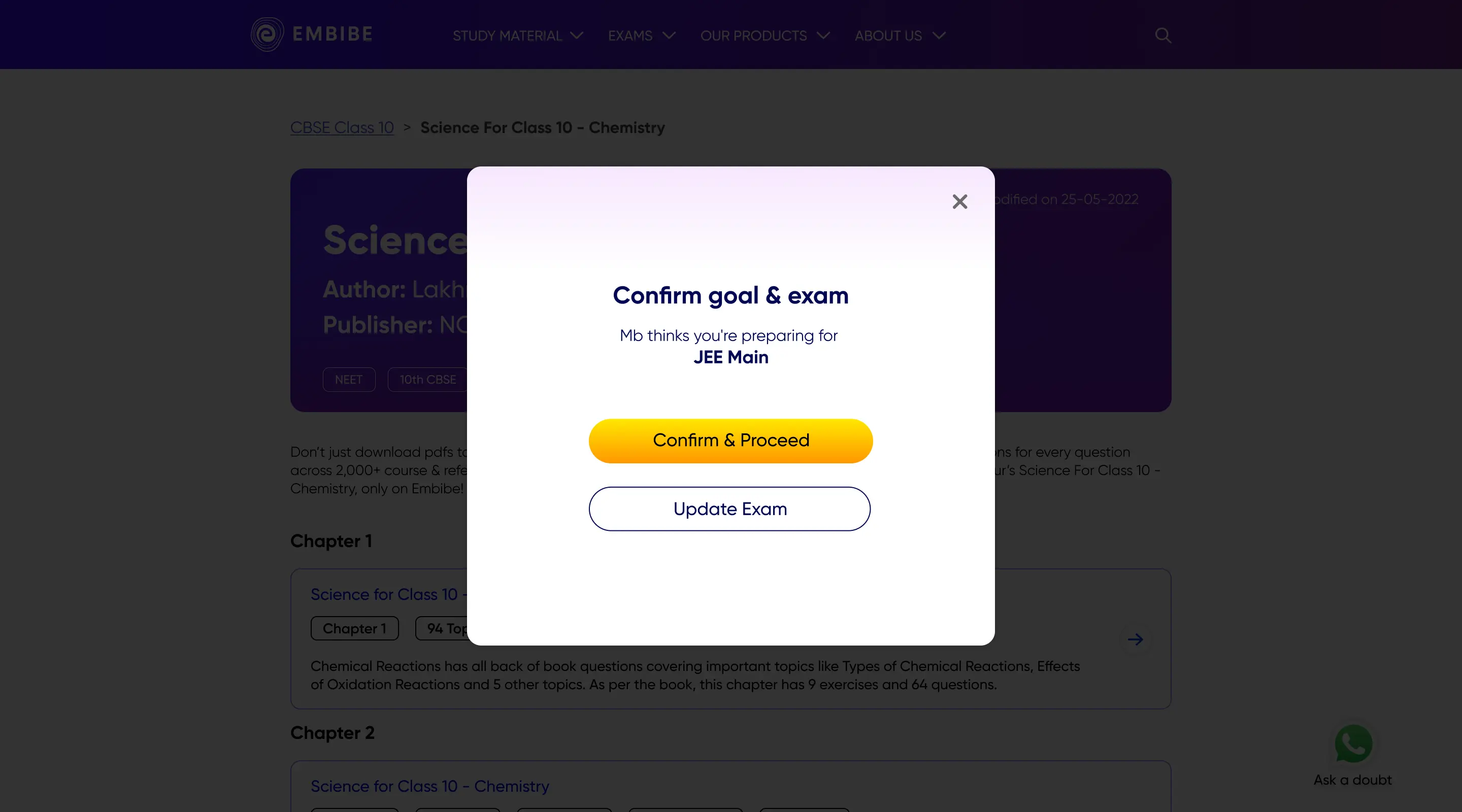Optimizing EMBIBE Web for Organic Conversions

Employer
Embibe
My Role
Research, product design, design systems.
Contribution
Solo designer, with guidance from a Lead designer, SEO Team
Timeline
Nov '22 - Feb '23
4 months

This design resulted in a 64% increase in the Signup rates.
Due to its success, what was initially designed for Embibe exam pages was rolled out across all Embibe web pages.
Huge Organic Traffic,
Low Sign-Ups
Redesigning Header menu for all Embibe Webpages
The Embibe SEO pages (Blog page in the older version) were the largest source of organic traffic amongst all the channels of the Embibe student app. The pages attracting the most traffic are the Book, Exams, and Questions pages, all embedded in the Blog page but they lacked proper navigation for the 3 million+ questions.


Issues in the Signup funnel
Users are facing challenges that hinder their full learning experience. These challenges include

User Drop off : While Sign-Up conversions were the ultimate goal, the journey to engage users and encourage them to browse enough content to convince them to sign up was insufficient.
Navigation between pages was virtually impossible: The absence of primary navigation made it extremely difficult for users to move between pages effectively .

Building upon clarity
Figuring the best order of items inside the menu
Card Sorting
While this was the preferred approach, the lack of ready access to users prompted the exploration of alternative methods.
Faculty/Edu expert review
Expert advice was sought from faculty members, but their diverse approaches to structuring the content did not provide a clear solution.
Stakeholder Inputs
Since the project was part of the SEO team, they suggested utilizing MSV or Monthly Search Volume to order the menu items, with the highest searched topics appearing first, aligning with user search trends.
A Seamless Path from Organic Traffic to App Sign-Up


Designed to improve learning content discoverability
The menus enhance SEO with better crawling and indexing by linking key pages, improving page rank and ensuring seamless navigation after landing on a page.
.docx
.xlsx
.odt
.pptx
.rtf
.webp
Optimised Search for Better User Engagement
The search functionality aims to improve user engagement, session duration, and content discoverability by offering a seamless search experience across various content types.




Reduced drop offs
Strategically designed to reduce number of steps to minimize drop-offs at the OTP stage, and simplify goal selection by auto selecting Goal & Exam based on page visited.
.docx
.xlsx
.odt
.pptx
.rtf
.webp
Design focused on discoverability
Search to increase content discoverability
The Final Version of Search is a matured version which implements positives from the 3 iterations.




Last Milestone
Streamlined onboarding
An A/B test was conducted to compare the effectiveness of single-message notifications versus two separate messages with OTP and verification link. In the post-OTP verification flow, users were directed to sign up from the last browsed content type (e.g., a book page if they were previously on a book page).















.webp)
